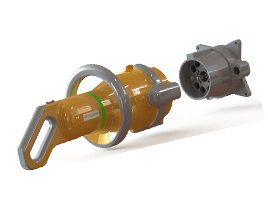A Comprehensive Consideration Checklist
In a recent study, it was found that the top 25 U.S. cities could save an average of 37 percent on fuel costs by switching to electric vehicles and buses, and up to 60 percent with managed charging. We know the cost savings with electric fleets are there. Shell’s acquisition of Greenlots and its focus on enterprise fleets is just one example that traditional oil and gas giants also see the value in fleet electrification, and states have been putting in policies to ensure zero-emission vehicles by 2030, including buses and trains. The move to electric fleets is underway.

Getting Started
Today, even before an EV rolls into a fleet garage or depot, fleet personnel have to evaluate their operational needs in the context of electrification. This involves looking at every aspect of the operation and asking questions, including:
+ Is the vehicle operating all day?
+ Will it have a set or variable route?
+ How are vehicles assigned to drivers?
+ How are vehicles and drivers being managed?
+ How and where is maintenance performed?
+ How and where is the vehicle garaged?
+ If it’s garaged overnight, how long does it need to be charged before it’s needed again?
+ What is the proposed EV adoption rate and replacement cycle?
Planning for Electrification
Charging starts at the depot, which is also where planning should start. Evaluating infrastructure needs shouldn’t be an afterthought, but part of a larger strategic approach to EV evaluation.

You need to determine how you’re going to charge the vehicle. Will you charge:
+ On route or in the garage or depot?
+ During operational hours or after hours?
+ At public charging spots as part of your mix or use the fleet’s charging infrastructure only?
You also need to determine how charging will affect your existing operations. For example, if you’re operating a transit fleet, how will electrification impact:
+ Routine maintenance? (Maintenance requirements are much lower for EVs.)
+ Washing and cleaning?
+ Overall personnel needs?
And, no matter the vehicle type—light-duty sedan or transit bus—you will need to determine:
+ How will you tie into the existing power grid, or can you?
+ What space and equipment requirements will you need to assess?
Considering Electricity Use and Costs
One of the most important infrastructure considerations is the cost of electric power and, potentially, the need to enhance infrastructure if extra electrical power is needed. Electricity—generally speaking—is significantly cheaper than traditional fuels such as gasoline or diesel. However, not taking into account the amount of power that will actually be needed for the mass charging of vehicles could result in a substantial increase in the demand for power at a given time.

To counteract this possibility considerations should be given to avoiding either charging during peak times or creating an artificial peak by charging numerous vehicles at their maximum rate simultaneously, also known as “stacking” the load.
Evaluating Your Operational Needs
This is the point where operational needs and energy demands intersect. If a vehicle—such as an airport shuttle or a transit vehicle—operates around the clock, the charging strategy/demand is going to be significantly different than for those vehicles that are garaged and charged overnight. Other fleet operations experience seasonal highs and lows in energy demands.
And it’s not just energy demands per se. Geography and weather have to be factored into the infrastructure equation. For example, will fleet vehicles be driving in extremely hot weather and need to run the air-conditioning system regularly, or will they be operating in extremely cold weather that could affect battery life as well as require heating the vehicle? What is the relevant terrain like—flat or hilly, rural or urban? Will fleet vehicles do mostly freeway driving or stop-and-go traffic? How will all of these factors affect how far vehicles can go on a charge?
Anatomy of an EV Charging Infrastructure
Once you’ve determined the power demands and feasibility of your charging ecosystem, the next step is to implement the infrastructure.

First, you will need to determine where the charging stations will be located.
Typically, this will mean either updating an existing garage or property to accommodate EV charging.
Preparing the site will likely be the most complicated aspect of installing the charging infrastructure. Installation will have to be done in a way that’s the least disruptive to current operations, since fleet vehicles will likely remain in operation during the installation and will need ongoing access to the facility to park, be cleaned, or be repaired. This may also mean making temporary operational changes.
Looking to Smart Charging for Success
Hardware is only part of the equation—electrification is as much a digital as it is an analog infrastructure commitment—so software integration is another key aspect of the implementation that you will need to consider. The process of “refueling” an EV isn’t a question of just plugging in. Because of peak energy demand and/or the inefficiency of stacking loads, charging at certain times may be much more than expensive than is expected and there could be significant waste in the process. This is why it is imperative to choose smart, networked charging hardware that can be managed with software.

To be intelligent, the charging network and charging software must be integrated with other fleet management systems, including routing, hardware, electric meters and fuel cards, as well as external services, such as weather or traffic management, to create a complete, correlated picture of the entire charging context to improve efficiency and have your vehicles available when they’re needed.
Electrifying fleets impacts mission critical infrastructure, and thus careful consideration such as this should be given. When ready to launch your pilot, a site walk through can ensure solutions that are customized to your particular needs. Fleets that start the gentle transition to electrification now will be well positioned for the future of fleets, and be able to both realize early cost and reliability wins, while identifying and starting to solve for gaps.
